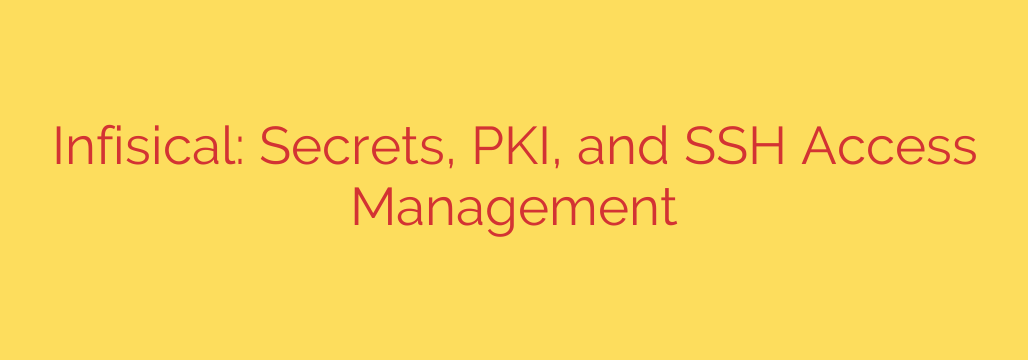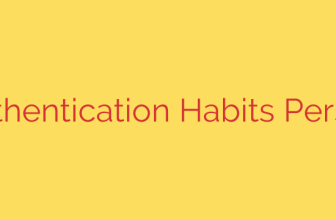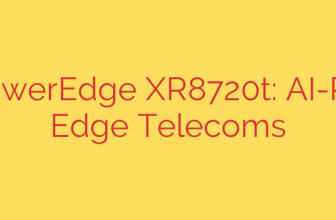
Unify Your Security: The Ultimate Guide to Secrets, PKI, and SSH Access Management
In today’s complex digital landscape, managing sensitive information is more critical than ever. Development teams juggle a dizzying array of API keys, database credentials, TLS certificates, and SSH keys. When handled improperly, this sensitive data creates significant security vulnerabilities. The traditional approach of scattering secrets across configuration files, manually managing server access, and struggling with certificate renewals is no longer sustainable.
A modern, integrated approach is essential for fortifying your infrastructure. By unifying secrets management, Public Key Infrastructure (PKI), and SSH access control under a single framework, organizations can dramatically improve their security posture, streamline operations, and empower developers to work securely and efficiently.
The Core Pillar: Centralized Secrets Management
At its heart, robust infrastructure security begins with how you handle “secrets”—any piece of sensitive information required for your applications and services to function. This includes everything from database passwords and API tokens to private encryption keys.
Leaving these secrets hard-coded in source code or stored in plaintext .env files is a recipe for disaster. A single leak can compromise your entire system. This is where a dedicated secrets management platform becomes indispensable.
A centralized system provides a secure, encrypted “vault” for all your secrets. Instead of developers managing their own credentials, applications can programmatically and securely fetch the information they need at runtime.
Key benefits of centralized secrets management include:
- Elimination of Secret Sprawl: All sensitive data is stored in one secure, auditable location, preventing it from being scattered across repositories, local machines, and messaging apps.
- Dynamic Secrets: Advanced platforms can generate secrets on-demand with a limited time-to-live (TTL). For example, instead of a permanent database password, an application can request temporary credentials that automatically expire after use.
- Granular Access Control: You can enforce strict policies defining who and what (e.g., a specific application or service) can access certain secrets, adhering to the principle of least privilege.
- Complete Audit Trails: Every action—from reading a secret to modifying a policy—is logged. This provides crucial visibility for security audits and incident response.
Building Trust with Automated Public Key Infrastructure (PKI)
Public Key Infrastructure (PKI) is the backbone of online trust. It’s the system that allows you to issue and manage the digital certificates (like SSL/TLS certificates) that encrypt web traffic and verify the identity of your services.
Manually managing a PKI is notoriously difficult. Expired certificates can cause catastrophic service outages, and the process of issuing, renewing, and revoking them is often slow and error-prone. Modern infrastructure demands an automated solution.
By integrating PKI management into your security platform, you can transform it from a manual chore into a seamless, automated process.
An automated PKI system allows you to:
- Act as a Private Certificate Authority (CA): Issue trusted certificates for your internal services, ensuring all communication within your network is encrypted and authenticated without the cost and complexity of public CAs.
- Automate Certificate Lifecycle Management: Automatically handle the entire lifecycle of a certificate, from creation and renewal to revocation. This completely eliminates the risk of outages due to expired certificates.
- Enforce Security Policies: Define and enforce standards for key length, signing algorithms, and certificate lifespans across your entire organization.
Fortifying Server Access with Modern SSH Management
Traditional SSH access relies on static, long-lived key pairs. Developers generate a key, add the public half to a server’s authorized_keys file, and keep the private key on their machine indefinitely. This model is fraught with risk. Private keys can be stolen, and when an employee leaves, tracking down and removing their public keys from every server is a logistical nightmare.
A modern approach to SSH management replaces this fragile system with a dynamic, certificate-based one. Instead of long-lived keys, users are granted short-lived, signed SSH certificates for access.
This works by having a trusted SSH Certificate Authority (CA) within your security platform. When a developer needs to access a server, they authenticate with the platform, which then issues them a temporary certificate valid for a short period (e.g., a few hours).
The advantages of certificate-based SSH access are immense:
- Elimination of Static SSH Keys: You no longer need to manage
authorized_keysfiles on individual servers. The servers are simply configured to trust your internal CA. - Just-in-Time (JIT) Access: Users are granted access only when they need it, and that access automatically expires. This drastically reduces your attack surface.
- Centralized Control and Auditing: All access requests are funneled through a central point, giving you a clear audit trail of who accessed what, when, and for how long. Revoking access is as simple as disabling a user’s account in one place.
Actionable Security Tips for Your Organization
Adopting a unified security model is a powerful step forward. Here are some practical tips to get you started:
- Conduct a Secrets Audit: Identify where all your current secrets are stored. Check code repositories, configuration management tools, and developer workstations for hard-coded credentials.
- Implement the Principle of Least Privilege: Ensure that users and applications only have access to the exact secrets and systems they absolutely need to perform their function.
- Automate Rotation Policies: Don’t rely on manual processes. Configure your secrets management platform to automatically rotate database credentials, API keys, and certificates on a regular schedule.
- Prioritize Just-in-Time Access: Move away from standing privileges. Adopt JIT principles for SSH and database access to ensure credentials are only valid for the duration of a specific task.
- Explore Open-Source Solutions: Powerful, enterprise-grade tools are available in the open-source community, offering a flexible and cost-effective way to implement a unified security platform without vendor lock-in.
By consolidating the management of secrets, certificates, and access, you create a single source of truth for your security infrastructure. This not only mitigates risk but also boosts developer productivity by providing a simple, secure, and standardized way to interact with sensitive resources.
Source: https://www.linuxlinks.com/infisical-secrets-management-pki-ssh-access/








